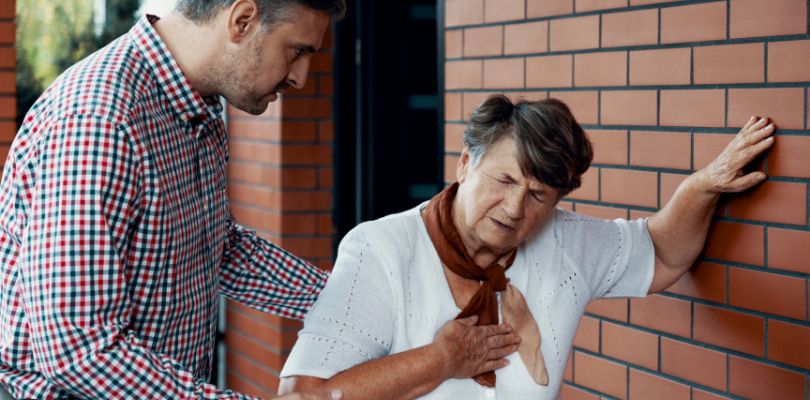Red Flags to Know
Chronic Obstructive Pulmonary Disease (COPD) is a long-term lung condition that makes it hard to breathe. It usually happens because of smoking or exposure to harmful air over time.
10 Signs of COPD
1. Shortness of Breath
You may feel out of breath, especially when doing everyday activities like walking or climbing stairs. This can happen even when you’re not doing anything strenuous.
2. Chronic Cough
A cough that doesn’t go away is a major sign of COPD. You may cough up mucus or phlegm, especially in the morning.
3. Wheezing
Wheezing is a whistling sound you might hear when you breathe. It happens because your airways are blocked or narrowed.
4. Chest Tightness
Some people with COPD feel tightness or pressure in their chest, making it harder to breathe deeply.
5. Frequent Respiratory Infections
People with COPD are more likely to get lung infections like colds or pneumonia. These infections can make your symptoms worse.
6. Fatigue
COPD can make you feel very tired, even after getting plenty of rest. This tiredness happens because your body isn’t getting enough oxygen.
7. Mucus Production
If you often cough up thick mucus, it could be a sign of COPD. Your lungs produce more mucus when they’re irritated.
8. Bluish Lips or Fingernails
When your blood doesn’t get enough oxygen, your lips or fingernails might look blue. This is a serious sign that you should get checked by a doctor.
9. Weight Loss
Some people with COPD lose weight without trying because it takes so much energy to breathe. Losing weight unexpectedly can be a sign that your body is struggling.
10. Swollen Ankles, Feet or Legs
COPD can cause poor circulation, leading to swelling in your lower body. This is a sign that your heart and lungs aren’t working as well as they should.
Treatments for COPD
While COPD can’t be cured, some treatments can help manage the symptoms and improve your quality of life. Here are some common treatments:
- Bronchodilators: These medications help relax your airways, making it easier to breathe. They come in inhalers and are often used daily.
- Steroids: Inhaled or oral steroids reduce inflammation in your lungs, helping you breathe better. They are usually used when your symptoms flare up.
- Oxygen therapy: If your blood oxygen levels are low, you may need to use oxygen to help you breathe. This can be done at home or on the go.
- Pulmonary rehabilitation: This is a special program that includes exercise, education and breathing techniques to help you manage your COPD symptoms.
- Quit smoking: If you smoke, quitting is the most important thing you can do to slow down the progress of COPD. Many programs and medications can help.
- Healthy eating: Eating a balanced diet can help keep your energy levels up and strengthen your immune system. It’s especially important if you’ve been losing weight due to COPD.
If you notice any of these signs, it’s important to see a doctor right away. Early diagnosis and treatment can help you manage COPD and lead a healthier life.
Read on to learn about the signs of lung cancer.
